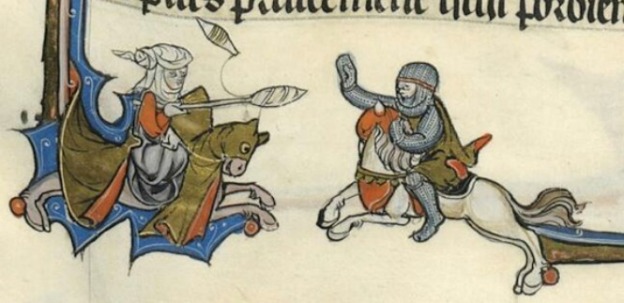Verbal duelling is a major part of the sagas and Eddas, as a substitute for other kinds of violence. Mostly it happens between two men, who accuse each other of cowardice, effeminacy, and general unmanliness.
However, there are incidents of male – female flyting as well, with men and women trading insults, usually much the same insults. The two best-known examples of male – female flyting in the Eddas are the quarrel between Skadi and Loki in Lokasenna, a poem which is essentially Loki’s verbal duel with each god and goddess in turn, and the heroic poem Helgakviða Hjörvarðssonar, which features a bout between the hero and a giantess.
Continue reading →










